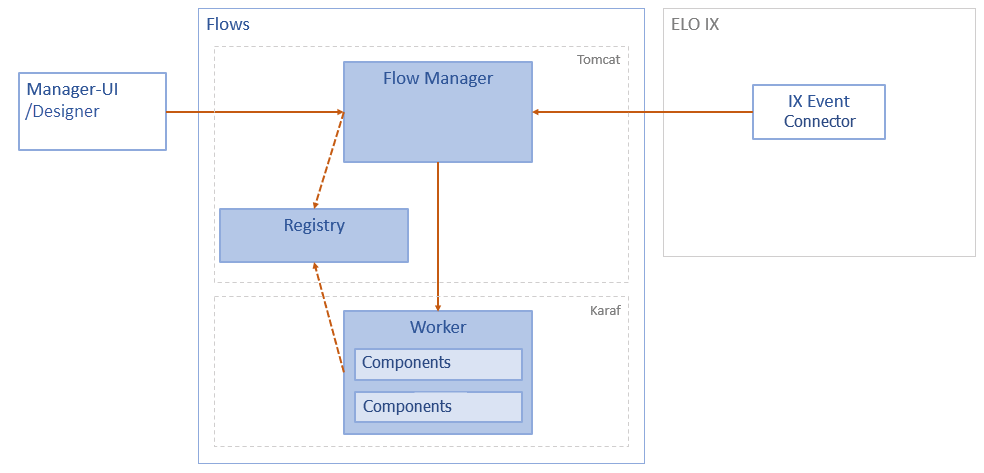# Architecture
The architecture of ELO Flows provides a web-based front end and a scalable worker model. ELO Flows also enables component management with hot deployment support through the integration of Apache Karaf.

# Modules
ELO Flows is made up of different modules.
The ELO flow manager and the registry run on a Tomcat as a web app (as do the other ELO modules). The workers run on an Apache Karaf (opens new window).
# Flow manager
The flow manager is a main instance in ELO Flows. It is responsible for starting new flows and managing existing ones.
The flow manager provides the interface for flow administration. Flows can be created and managed via this interface. The interface can also access registry information.
# Flow administration
The flow administration area is the interface in the ELO Administration Console. You can manage flows here. The app is provided together with the required interfaces by the flow manager.
# Workers
The workers are independent containers. Components are deployed in the workers. More than one container can be used in parallel for load balancing purposes.
# Registry
The registry is a main instance in ELO Flows. The workers authenticate with the registry and register their components there. The registry also checks whether the workers can be reached and is notified if the components of a worker change.
# ELOix event connector (OSGi plug-in)
The ELOix plug-in is responsible for forwarding ELOix events to the flow manager.
Currently, a differentiation is made between the following events:
- Creation of a SORD
- Update of an existing SORD
- Call of a dynamic keyword list from a form
# Components
The components are developed as OSGi plug-ins. They provide triggers and services.